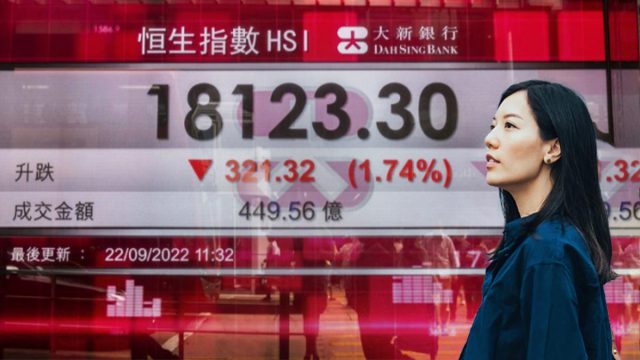In a recent turn of events, Asian markets have seen a significant slide to nine-month lows, as a combination of worries regarding China’s economic recovery and uncertainties over potential interest rate hikes by the US Federal Reserve have sent shockwaves through investor confidence. This has led to a flurry of activity across various sectors and regions, with implications for both the global economy and financial markets.
The MSCI’s broadest index of Asia-Pacific shares outside Japan, marked by the symbol.MIAPJ0000PUS experienced a notable drop to 495.03, a level not seen since November 29th. As of the most recent update, the index stands at 497.11, reflecting a 1.14% decline and an alarming 8% decrease for the month of August. If the current trend persists, this could potentially mark the worst monthly performance since September.
The downward trend has been widespread across the Asia Pacific region, with Japan’s Nikkei index (symbol .N225) and Australia’s S&P/ASX 200 index (symbol .AXJO) both registering a significant 1% decline. Meanwhile, China’s blue-chip CSI 300 Index (symbol .CSI300) faced a 0.45% drop, and Hong Kong’s Hang Seng Index (symbol .HSI) plummeted by 1.7%, approaching levels last seen nine months ago.
The prevailing sentiment surrounding China’s economic recovery has been a cause for concern, exacerbated by a series of disappointing economic data releases post-pandemic. Despite attempts by policymakers to stimulate the economy, investors remain skeptical, attributing the lackluster response to incremental measures that have failed to restore market confidence. Notably, China’s real estate sector crisis, marked by missed payments on investment products and declining home prices, has added to the prevailing economic uncertainties.
Across the Pacific, Wall Street also felt the impact, with overnight losses attributed to the release of minutes from the Federal Reserve’s July meeting. The minutes revealed a division among officials regarding the necessity of further interest rate hikes. While some participants expressed concern about the potential adverse effects of pushing rates too aggressively, most policymakers continued to prioritize curbing inflation.
The Federal Reserve had previously raised rates by 25 basis points during the July meeting, following a period of no change in June. Fed Chair Jerome Powell emphasized the need for a slowdown in economic growth and a weaker labor market to ensure that inflation convincingly returns to the central bank’s 2% target.
Recent commentary from officials, including the more hawkish voices, suggests a willingness to consider a pause in the September meeting, while keeping open the possibility of another hike in either the November or December sessions. ING economists provided insight into this situation, speculating that the Fed might indeed keep interest rates steady in September but potentially forego the final forecasted hike, as additional hikes could elevate the risk of recession.
Market projections, as indicated by the CME FedWatch tool, currently show an 86% probability of the Fed maintaining current rates in the next month. However, there is a 36% chance of a rate hike during the November meeting. As yields on benchmark 10-year bonds reached 4.288%, the highest since October 21st, and with a looming peak of 4.338% over the past 16 years, the US dollar experienced an uptick. The dollar index, which gauges the US currency against six other major currencies, rose to a two-month high of 103.58, reflecting a flight to safety by investors.
Meanwhile, the Japanese yen weakened slightly against the dollar, reaching 146.42, a fresh low over the past nine months. Market observers kept a close watch on the possibility of intervention rhetoric from Japanese officials. Finance Minister Shunichi Suzuki clarified that authorities were not targeting specific absolute currency levels for intervention.
The tumultuous market environment also impacted the commodities sector, particularly oil prices, which faced their fourth consecutive session of decline. US crude oil fell by 0.34% to $79.11 per barrel, and Brent crude followed suit, dropping by 0.26% to reach $83.23 on the day.
In conclusion, the recent developments in Asian markets, marked by sharp declines and heightened uncertainties, are a direct result of concerns surrounding China’s economic recovery and the intricate web of expectations regarding the US Federal Reserve’s future interest rate decisions. These events have not only reshaped the financial landscape in the Asia Pacific region but also sent ripples across global financial markets. As the world watches for further developments, market participants remain vigilant, taking cautious steps to navigate these uncharted waters.
For further read of economic news, please Click Here




















